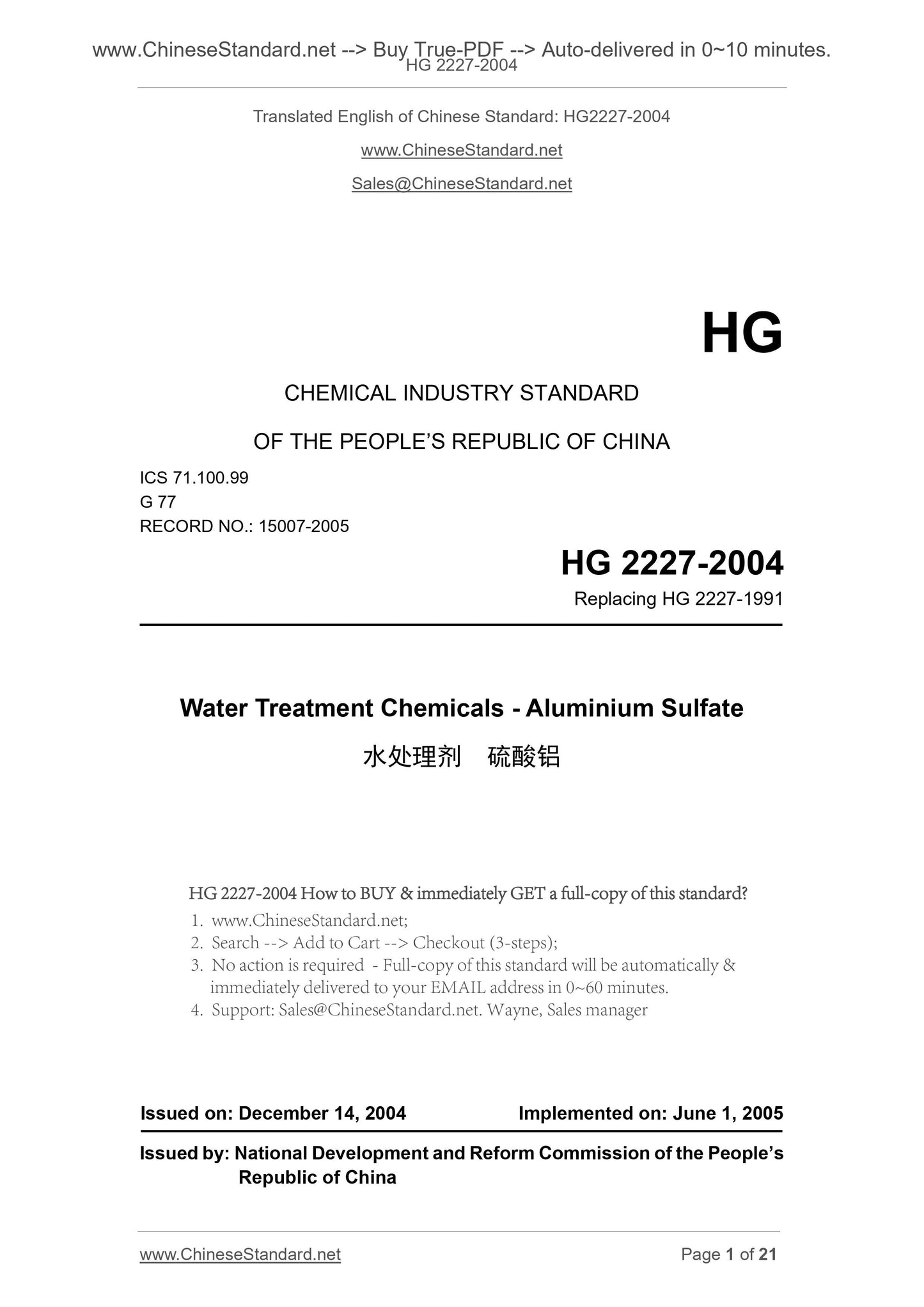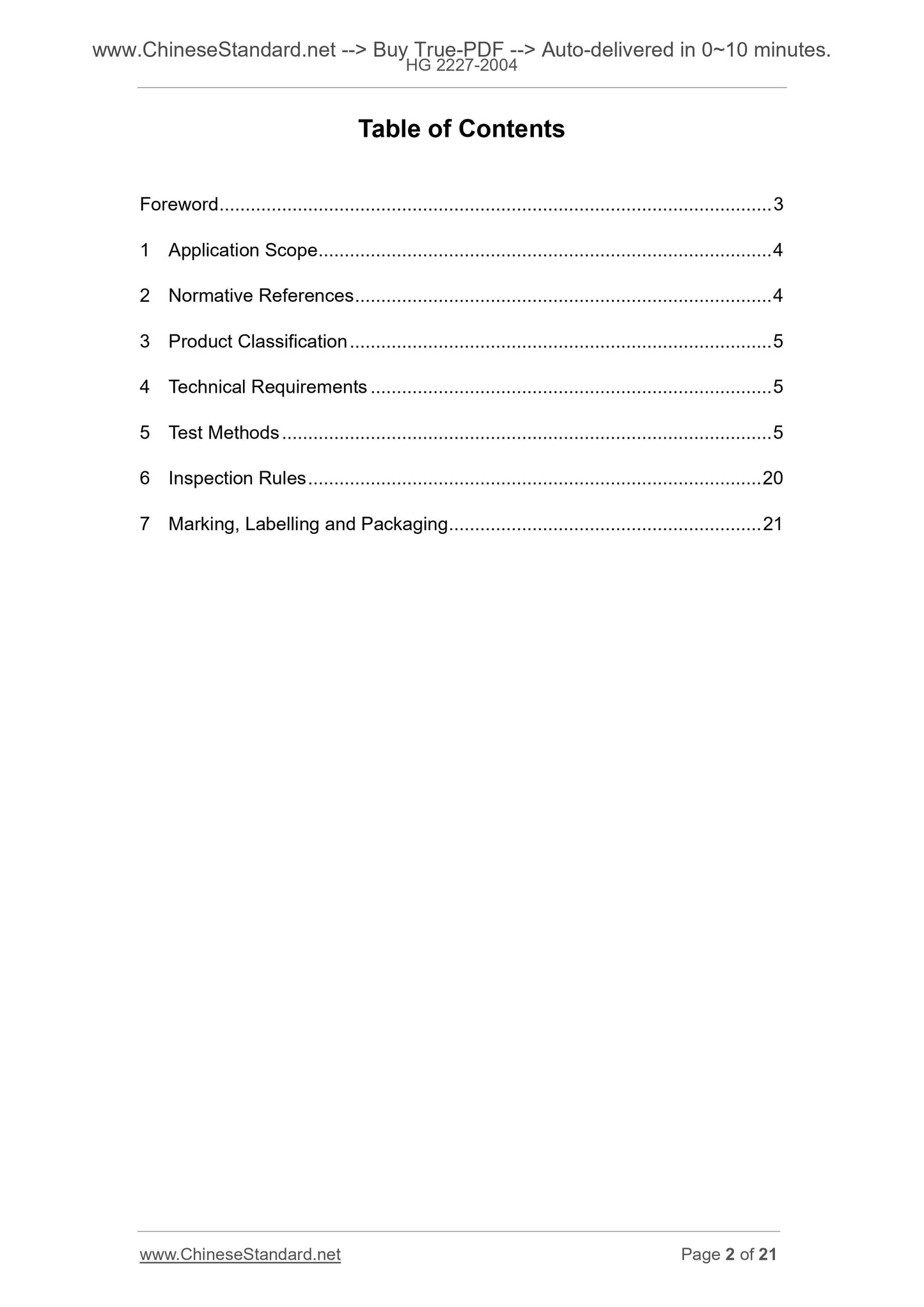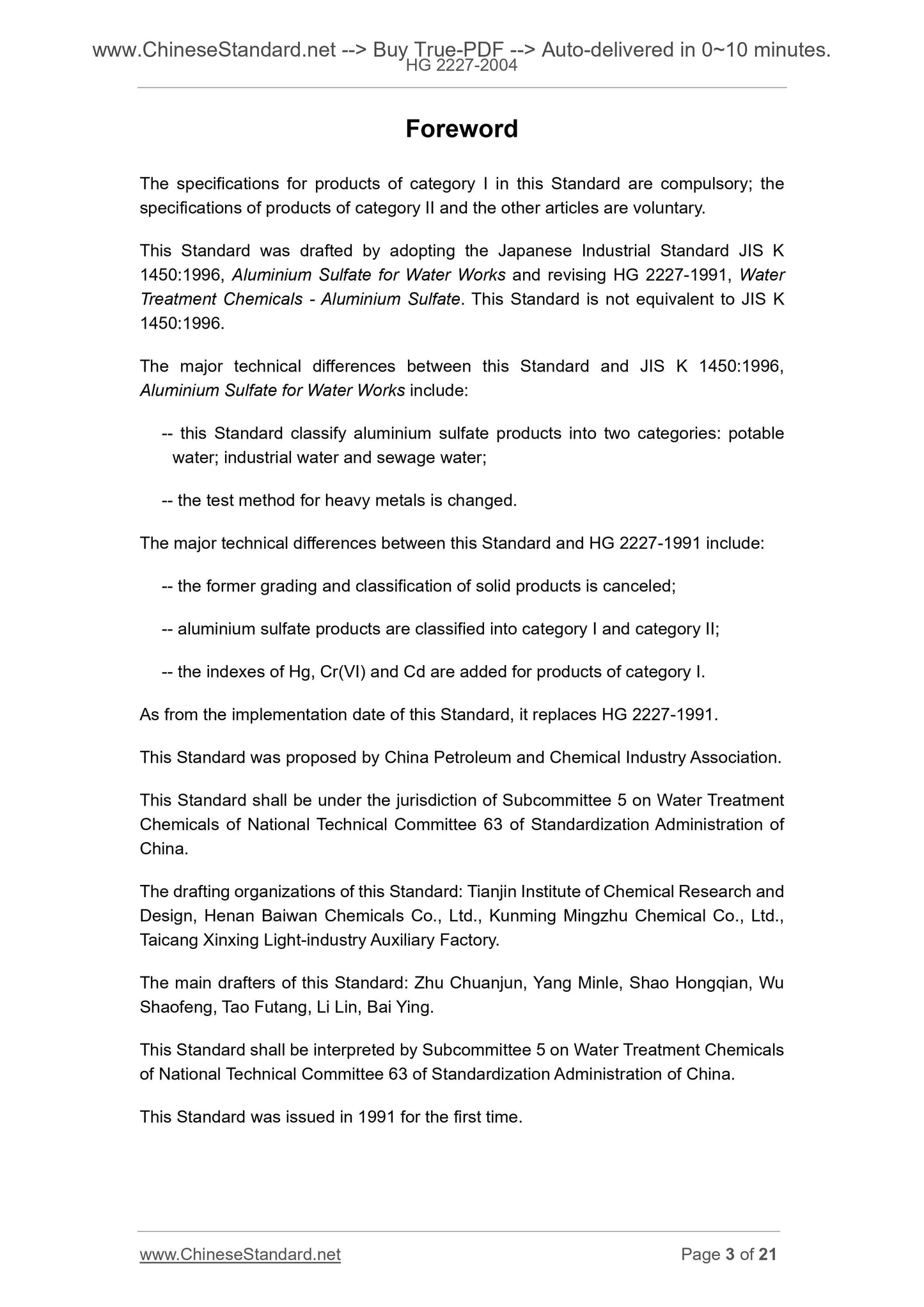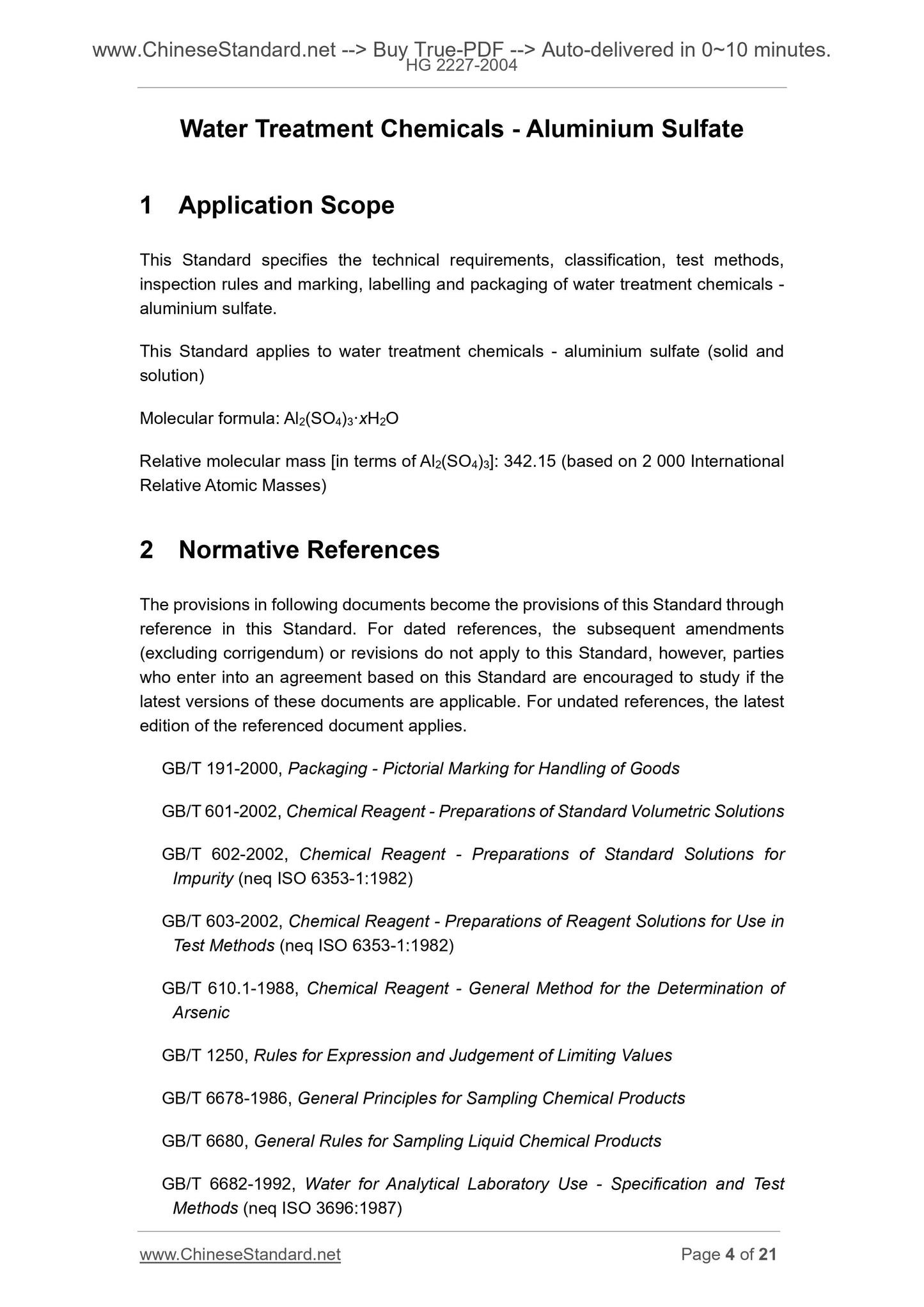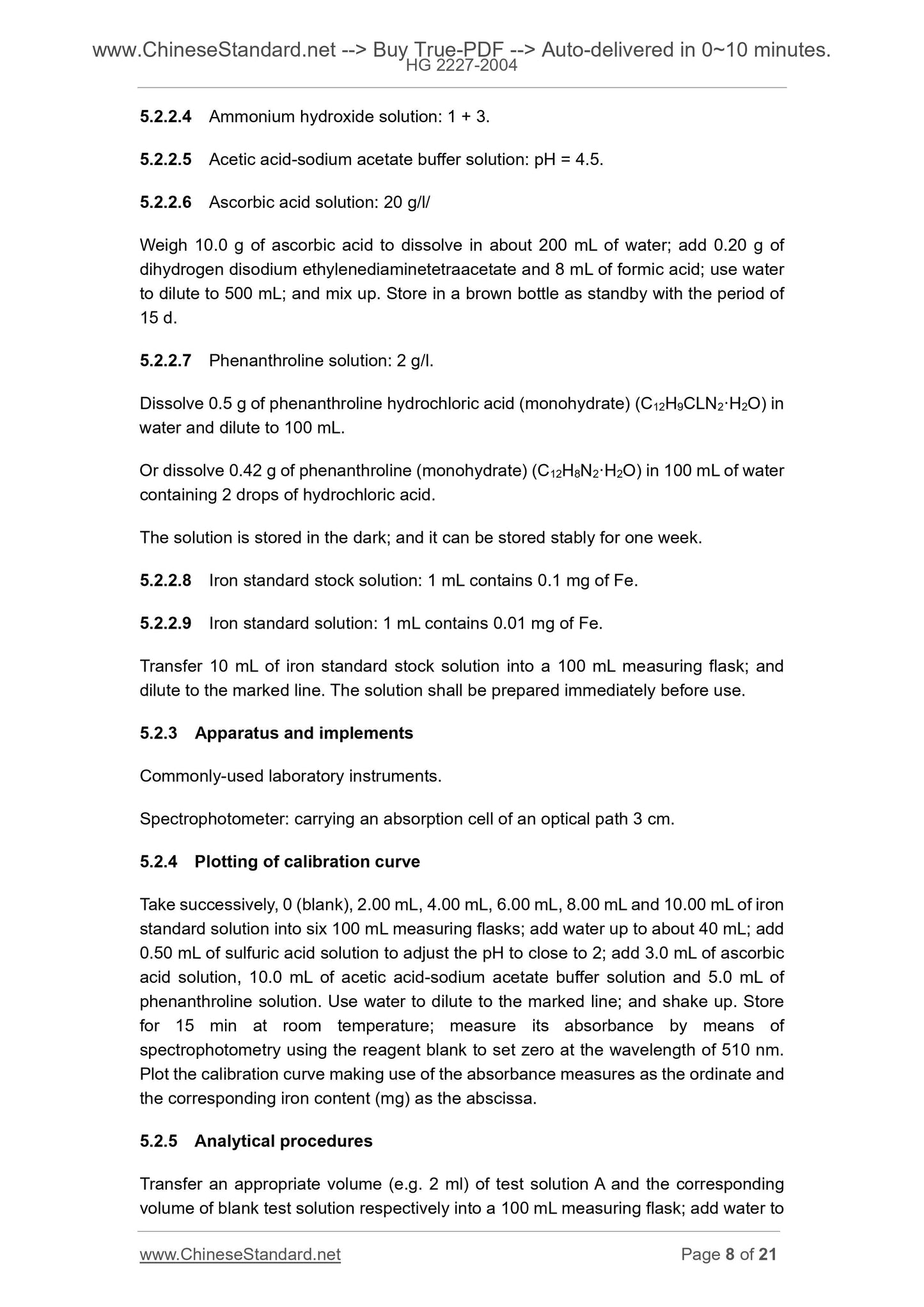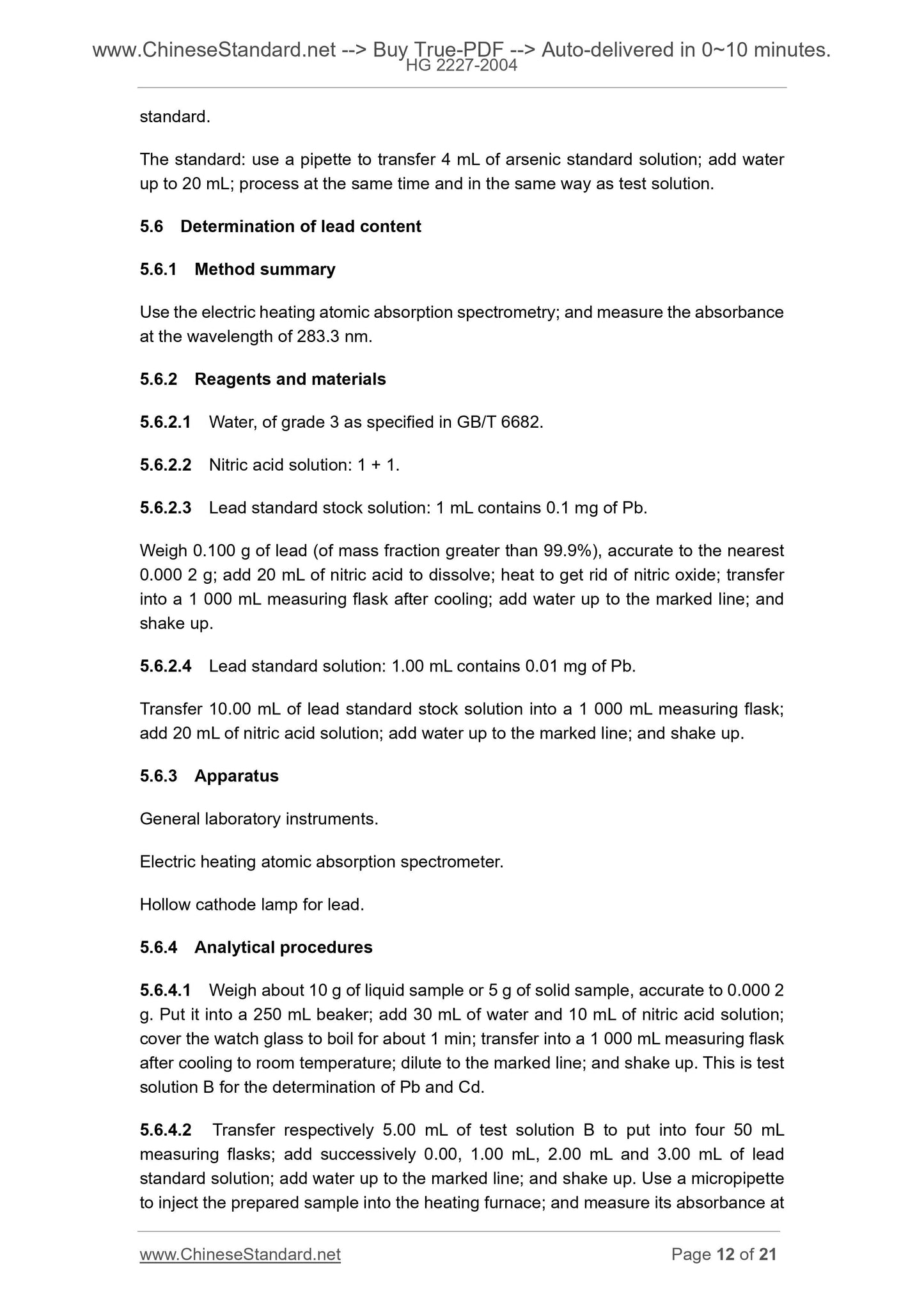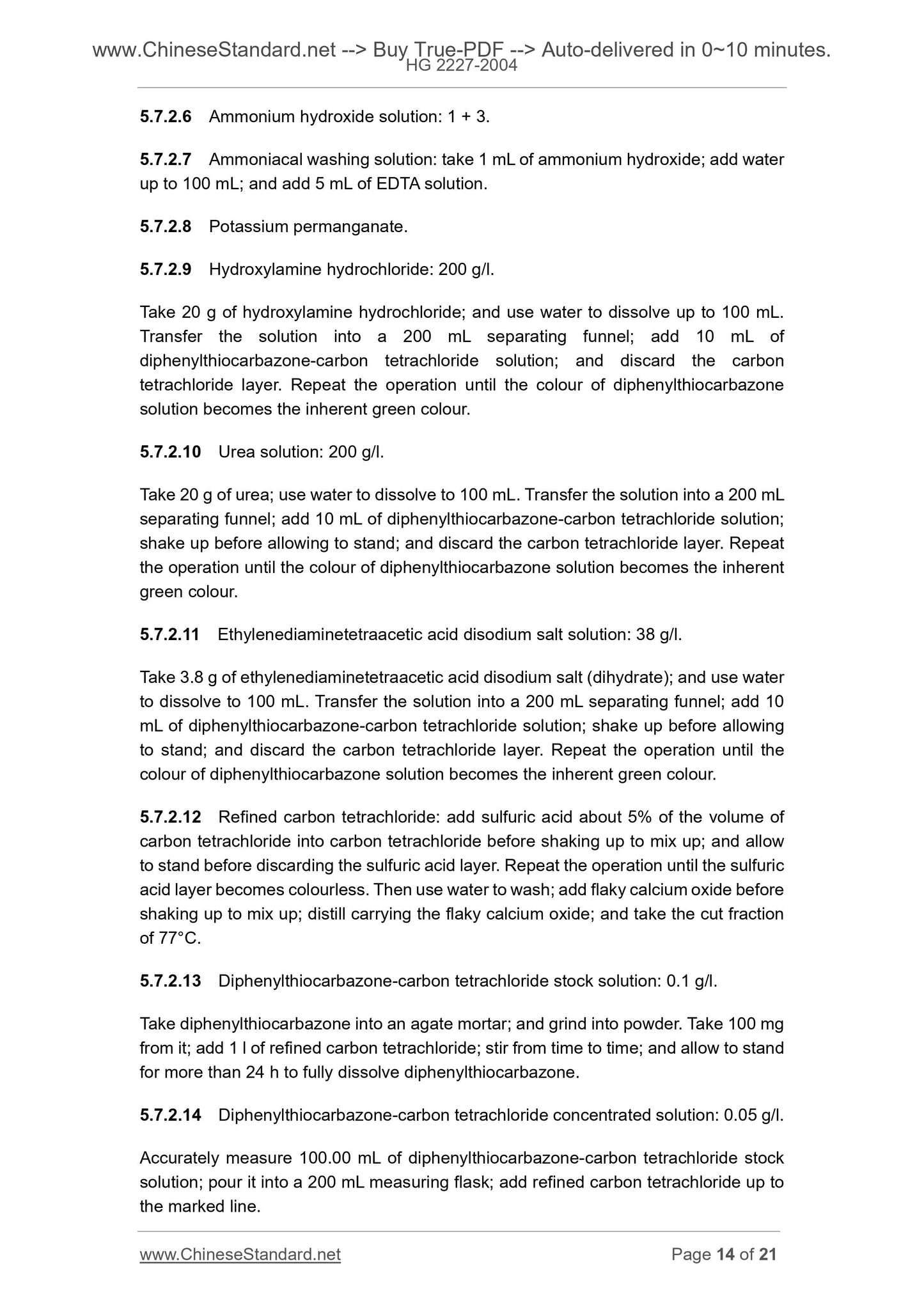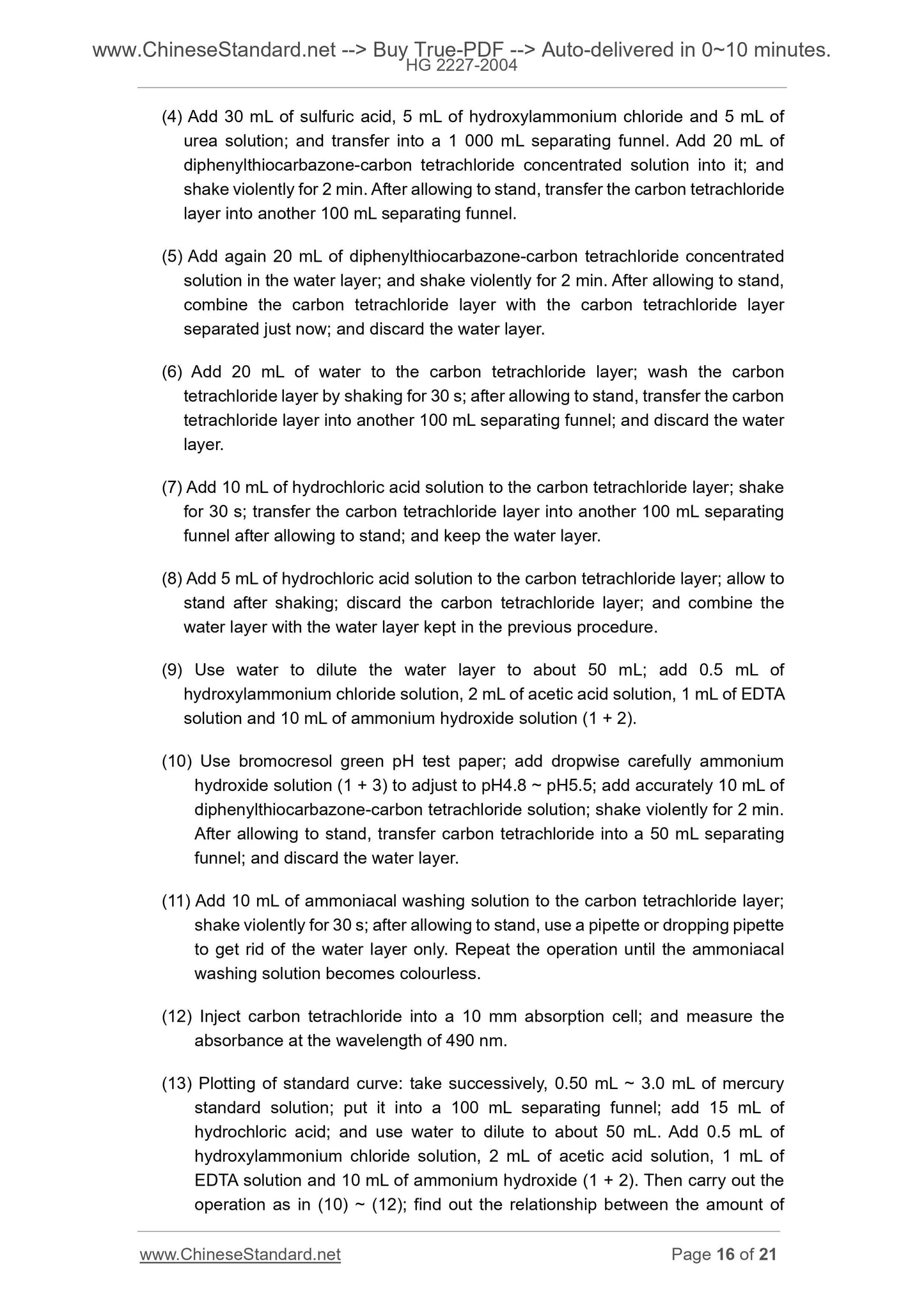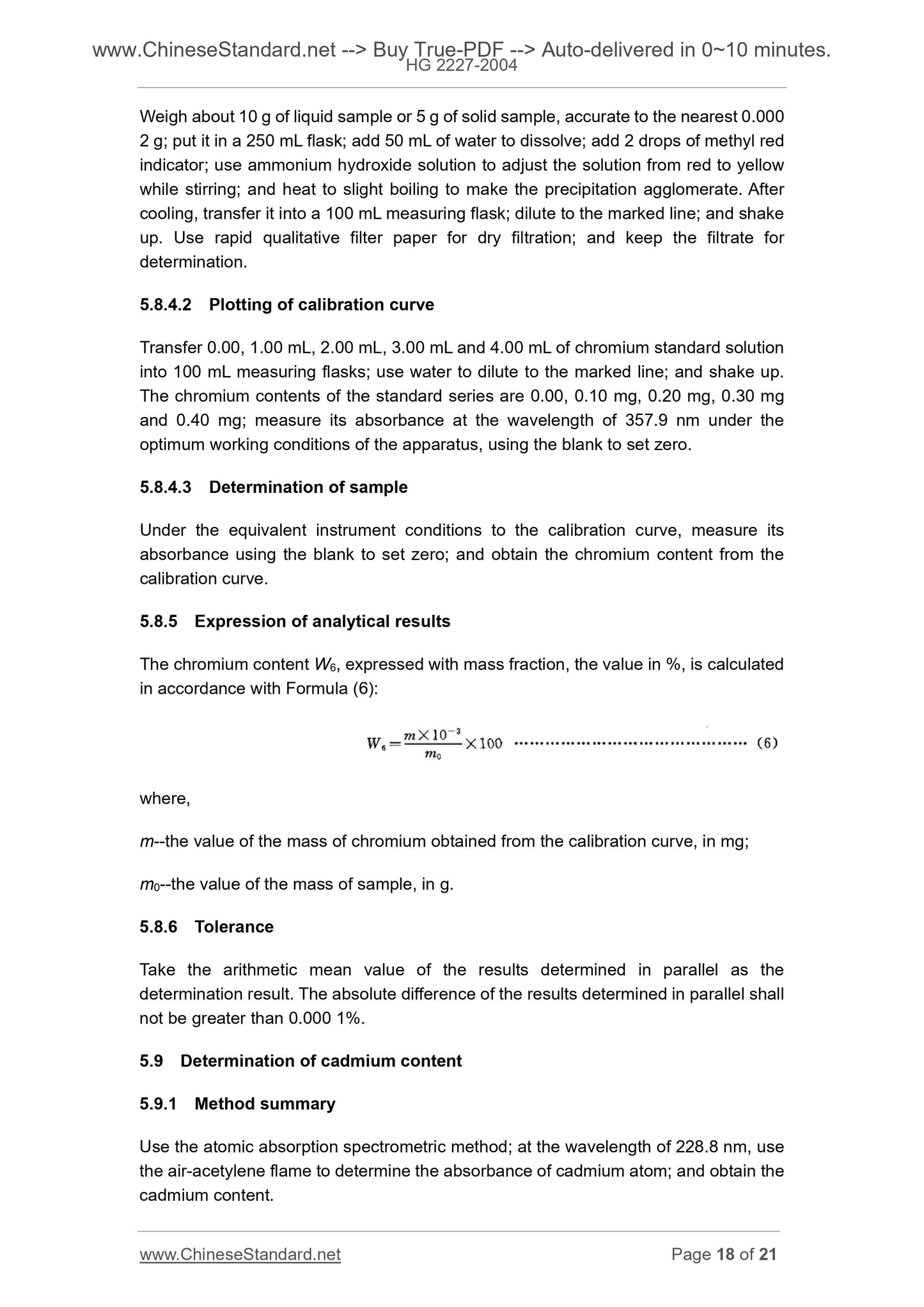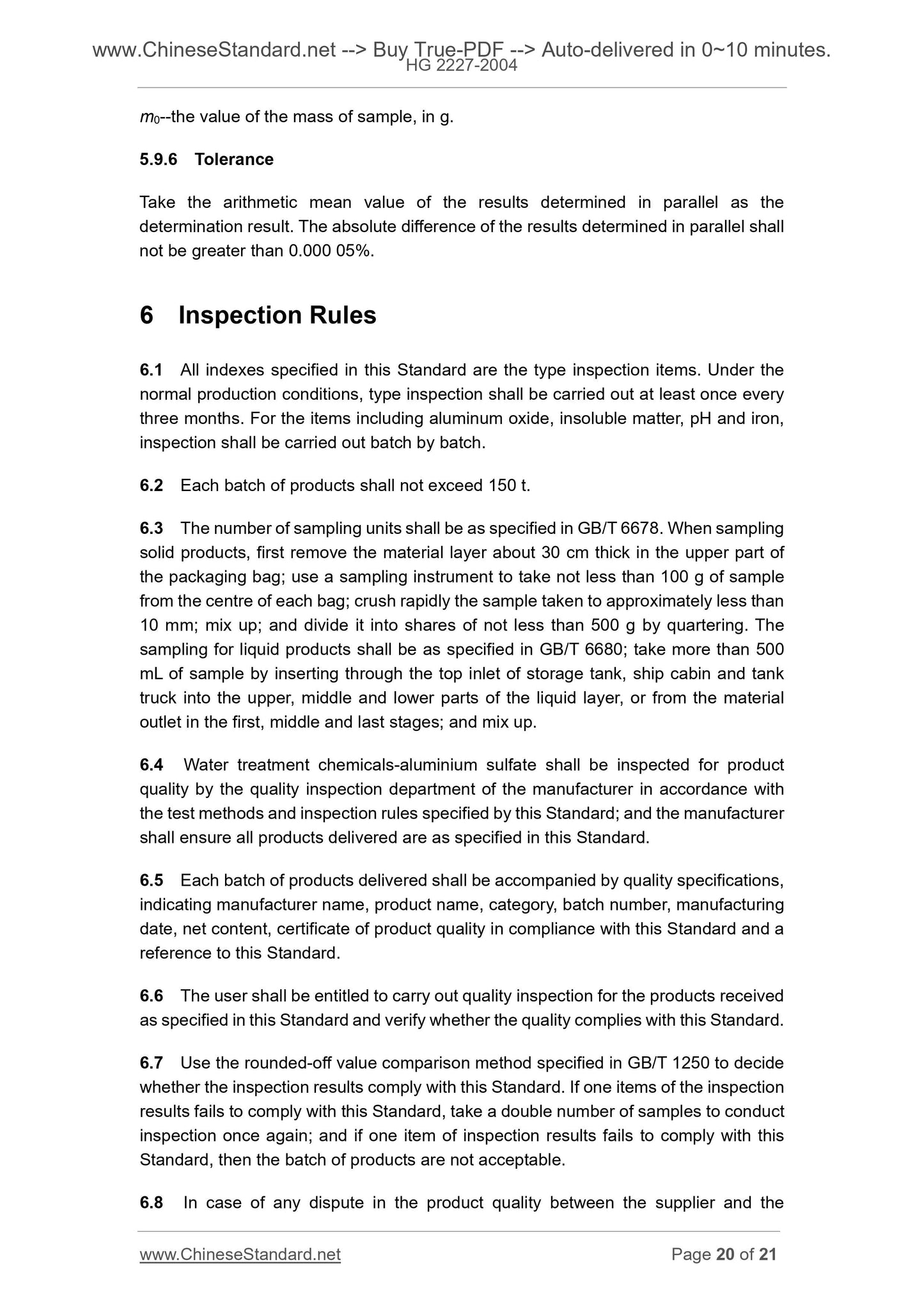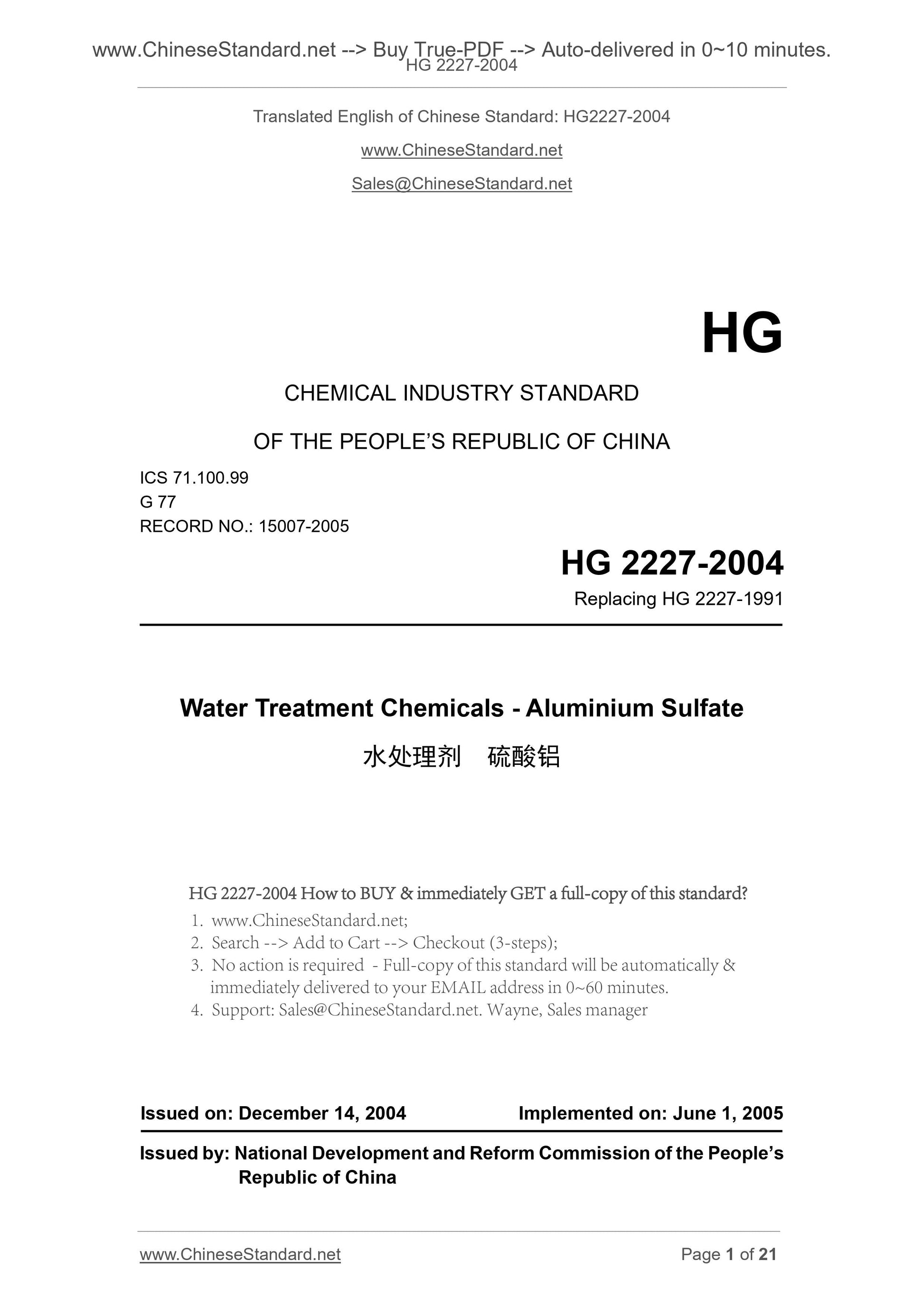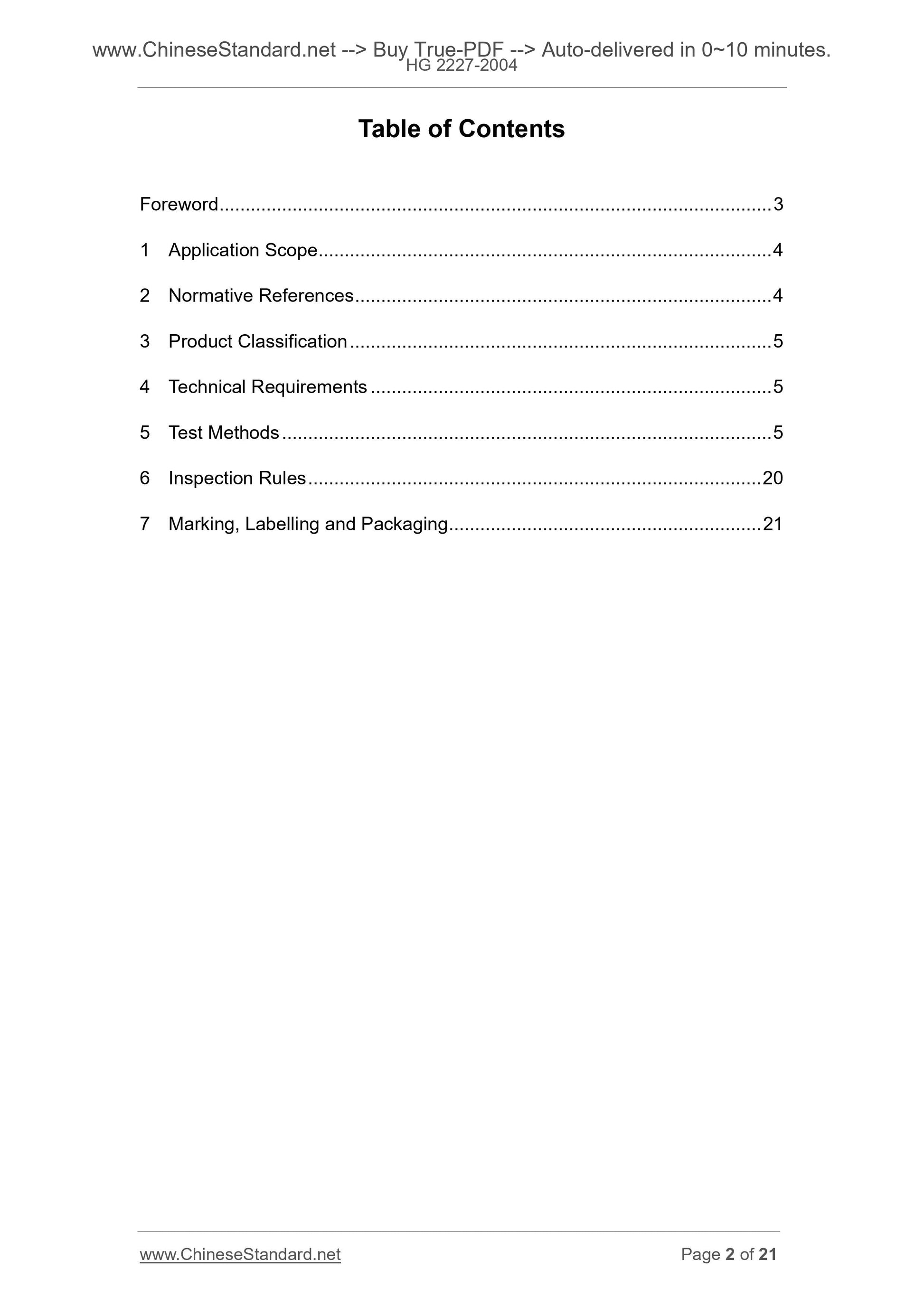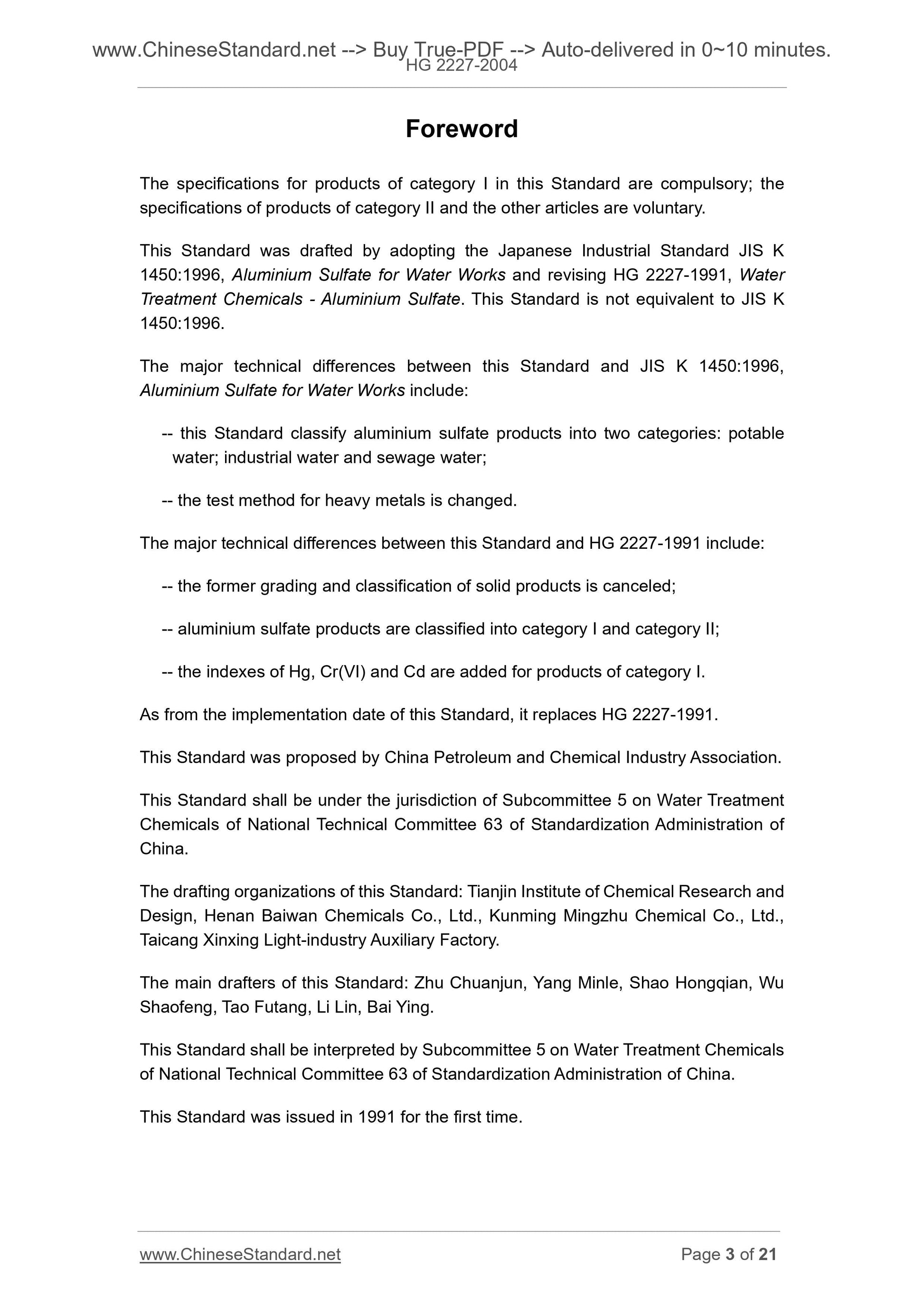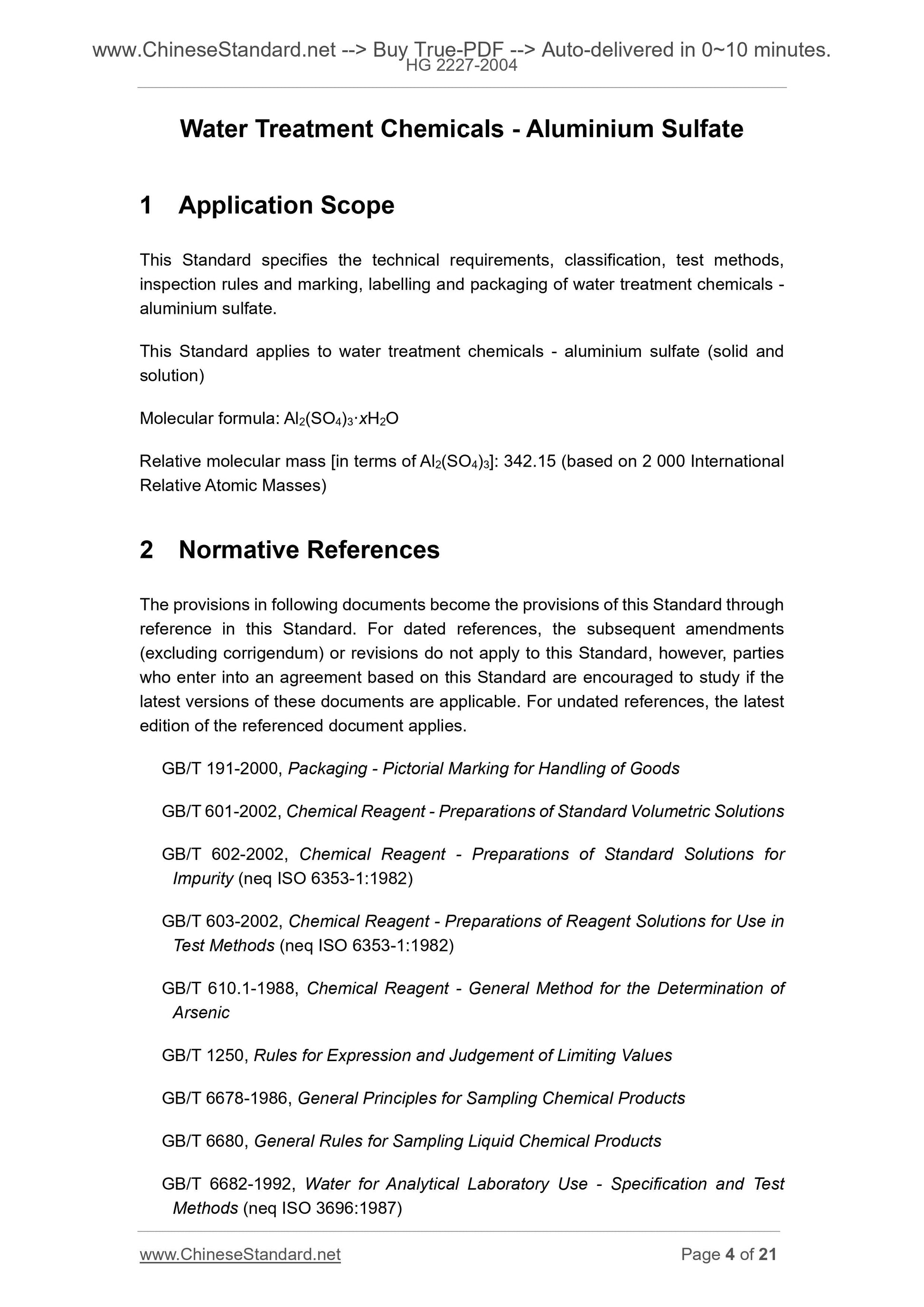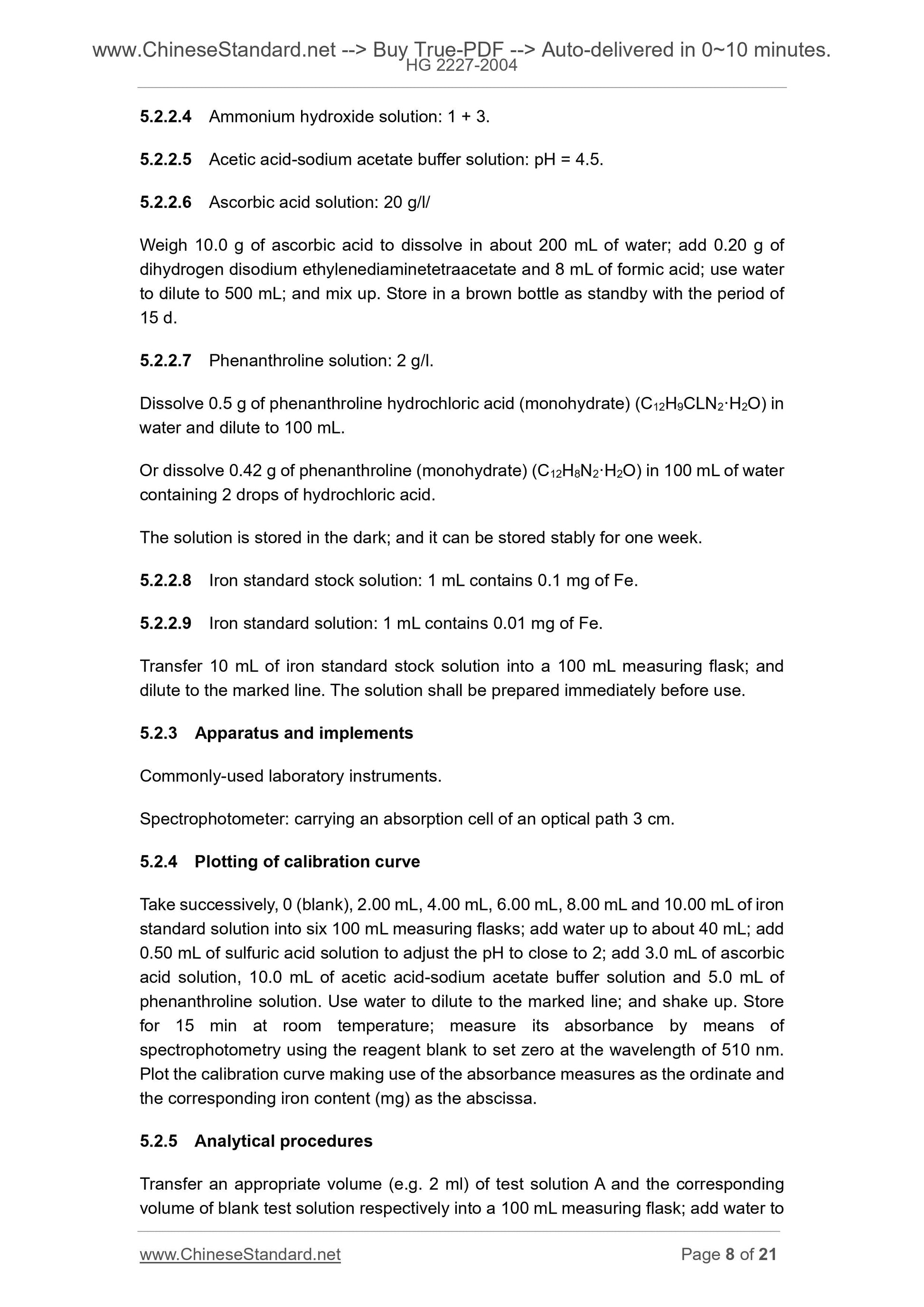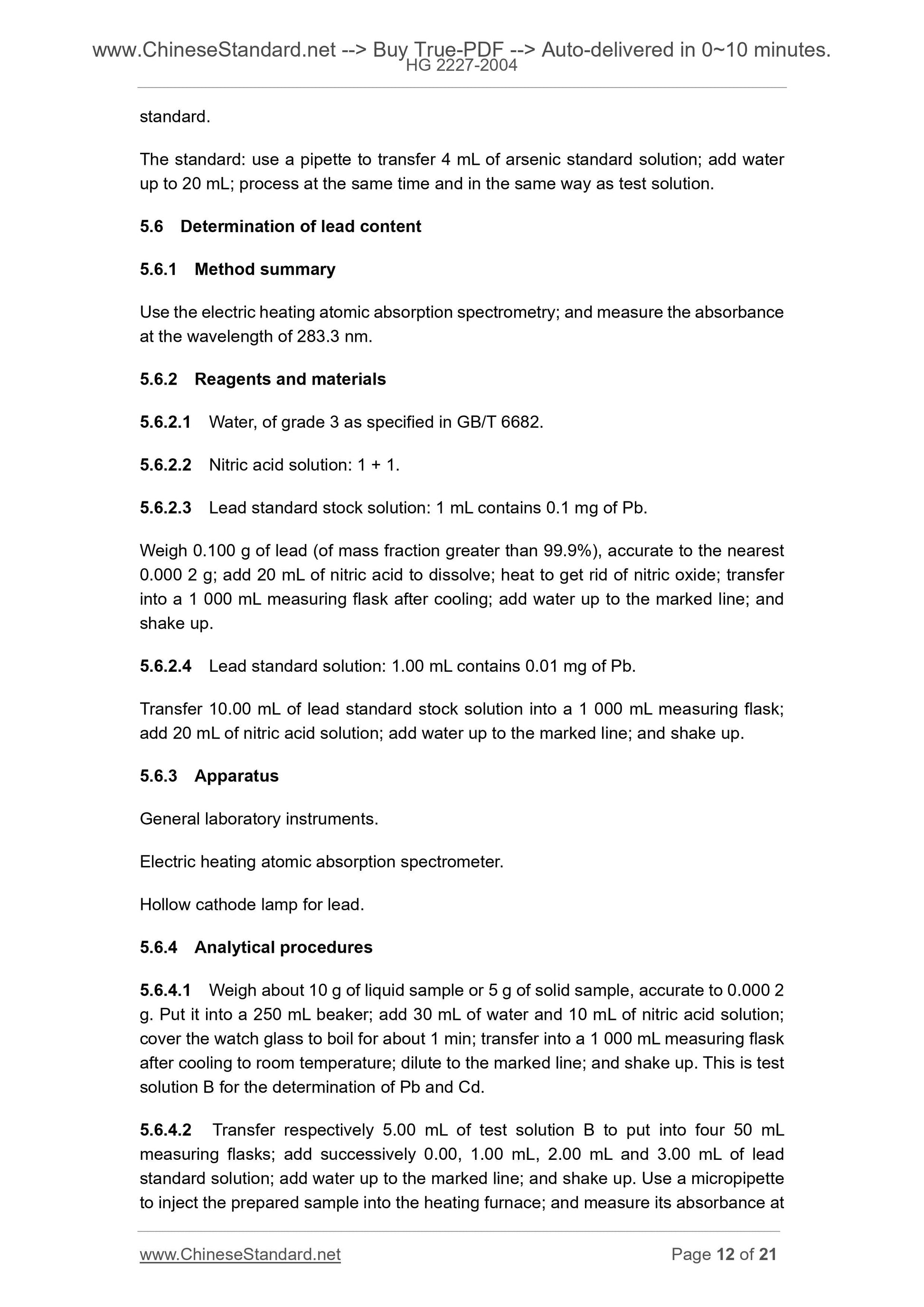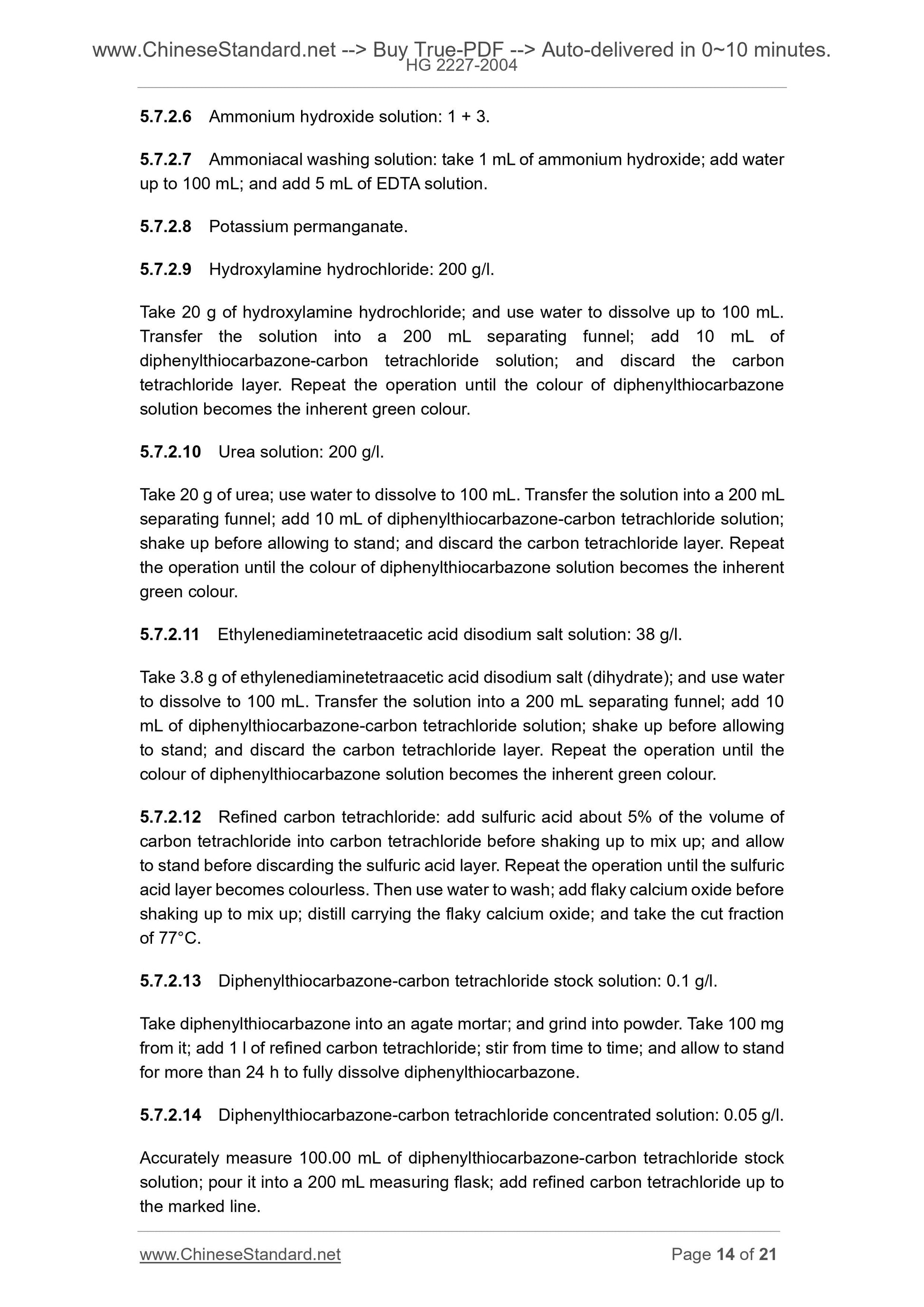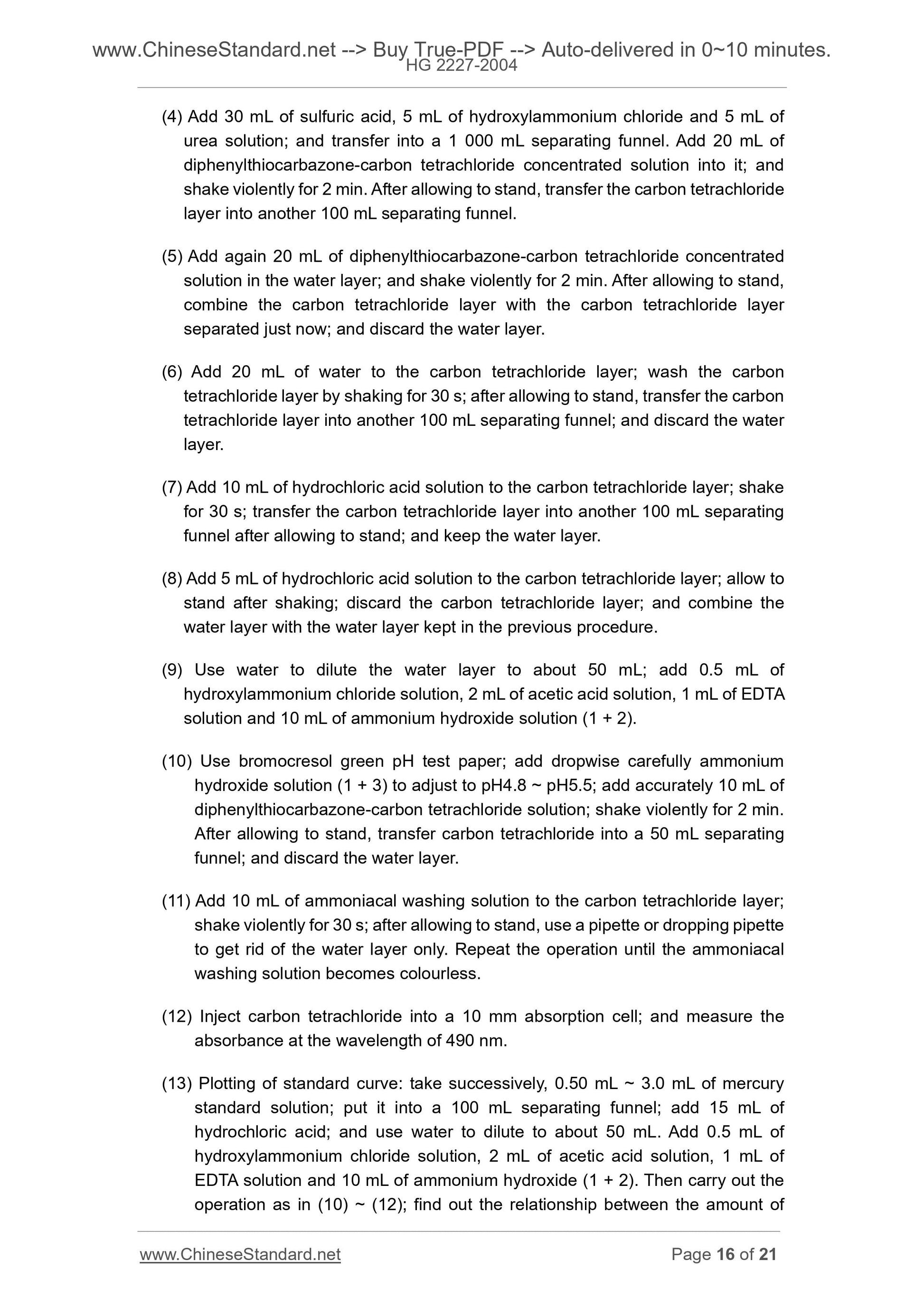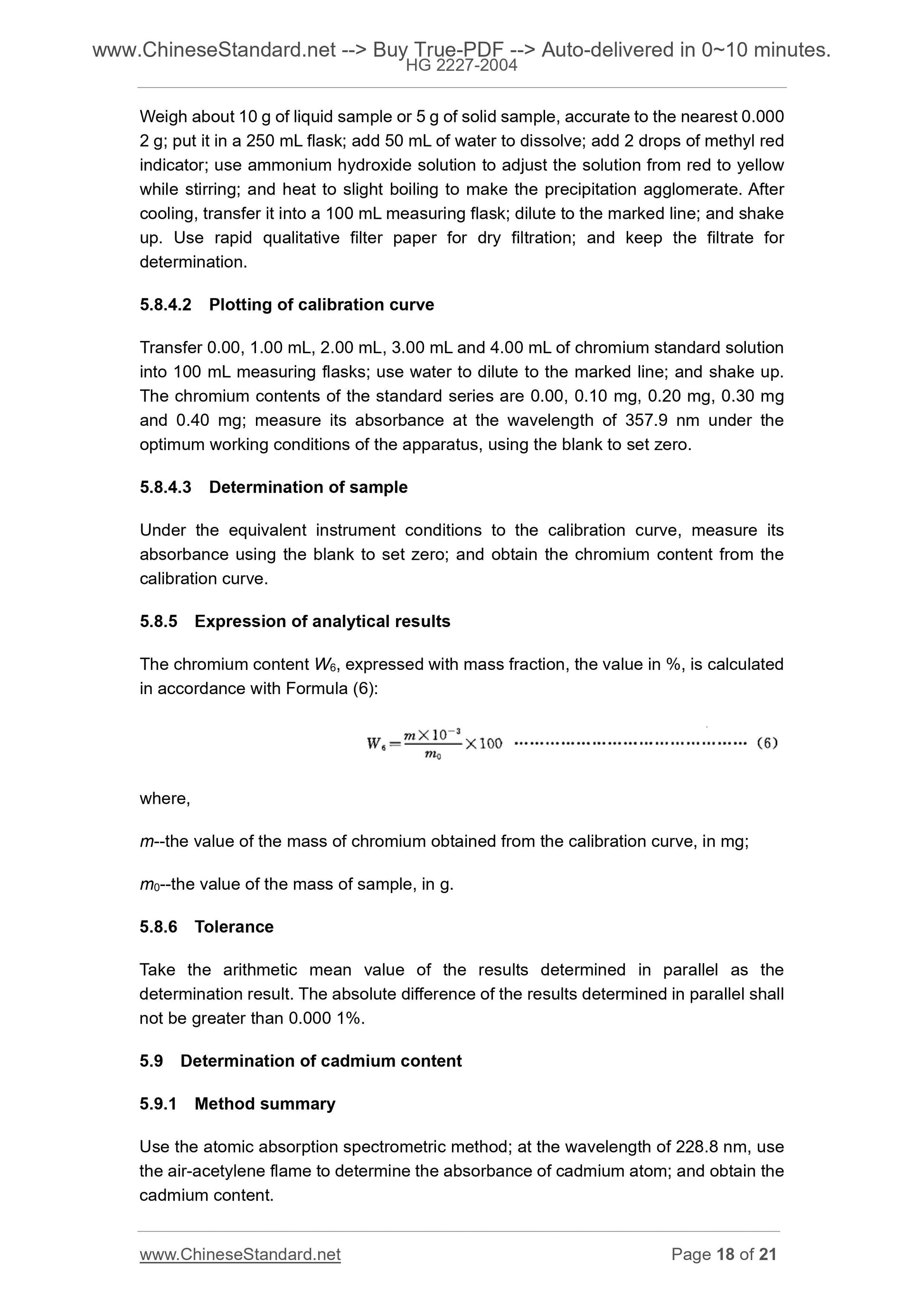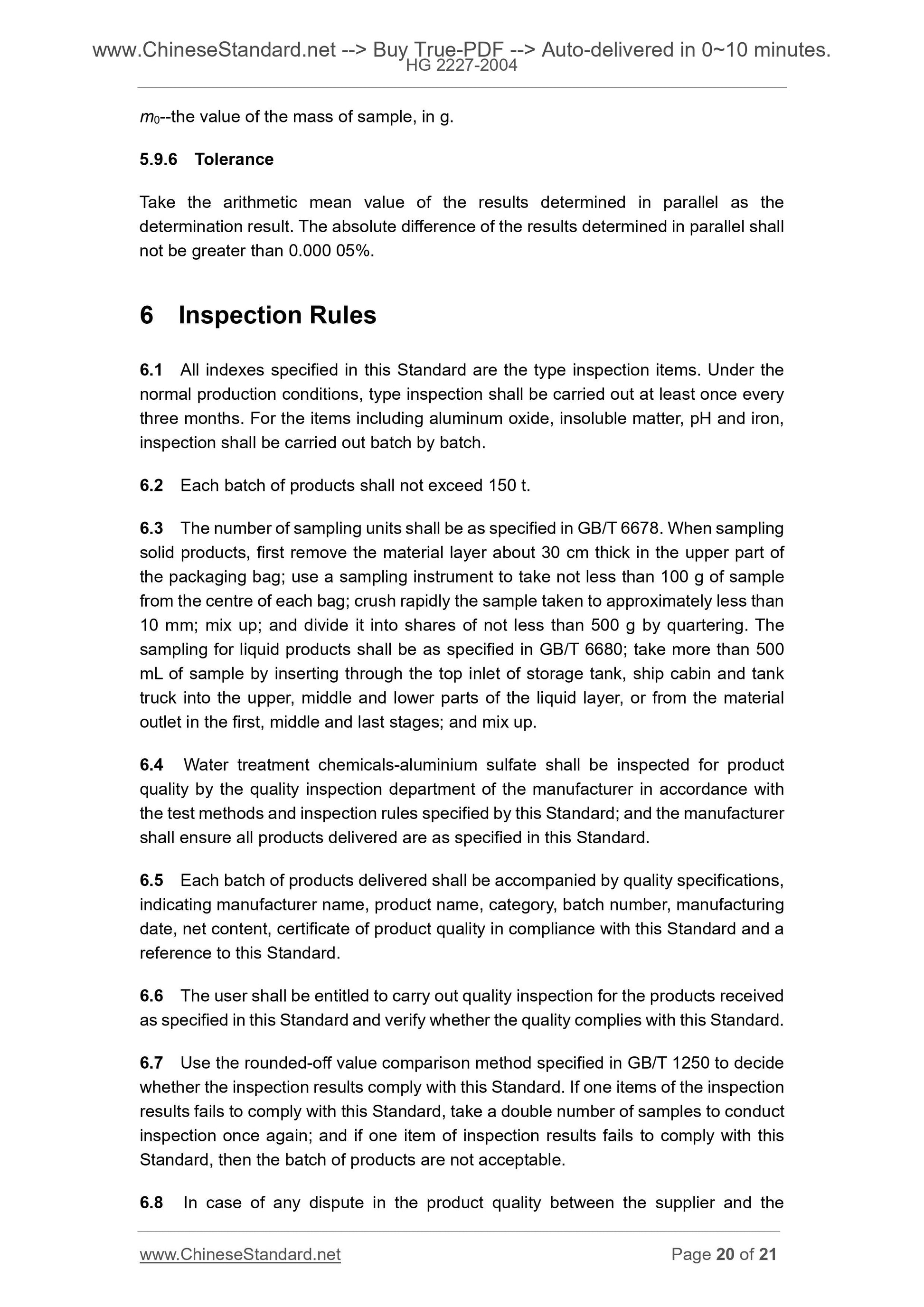1
/
of
10
www.ChineseStandard.us -- Field Test Asia Pte. Ltd.
HG 2227-2004 English PDF
HG 2227-2004 English PDF
Regular price
$160.00
Regular price
Sale price
$160.00
Unit price
/
per
Shipping calculated at checkout.
Couldn't load pickup availability
HG 2227-2004: Water treatment chemicals-aluminum sulfate
Delivery: 9 seconds. Download (and Email) true-PDF + Invoice.Get Quotation: Click HG 2227-2004 (Self-service in 1-minute)
Newer / historical versions: HG 2227-2004
Preview True-PDF
Scope
This Standard specifies the technical requirements, classification, test methods,inspection rules and marking, labelling and packaging of water treatment chemicals -
aluminium sulfate.
This Standard applies to water treatment chemicals - aluminium sulfate (solid and
solution)
Molecular formula. Al2(SO4)3·xH2O
Relative molecular mass [in terms of Al2(SO4)3]. 342.15 (based on 2 000 International
Relative Atomic Masses)
Basic Data
| Standard ID | HG 2227-2004 (HG2227-2004) |
| Description (Translated English) | Water treatment chemicals-aluminum sulfate |
| Sector / Industry | Chemical Industry Standard |
| Classification of Chinese Standard | G77 |
| Classification of International Standard | 71.100.99 |
| Word Count Estimation | 13,166 |
| Date of Issue | 2004-12-14 |
| Date of Implementation | 2005-06-01 |
| Older Standard (superseded by this standard) | HG 2227-1991 |
| Adopted Standard | JIS K1450-1996, NEQ |
| Regulation (derived from) | Development and Reform Bulletin (04/ 75) |
| Summary | This standard specifies the treatment agent aluminum sulfate technical requirements, classification, test methods, inspection rules and signs, labels and packaging. This standard applies to water treatment agent aluminum sulfate (solid solution). The product is mainly used for drinking water and industrial water, wastewater and sewage treatment, which should be used for drinking water using industrial raw sulfuric acid. |
Share
